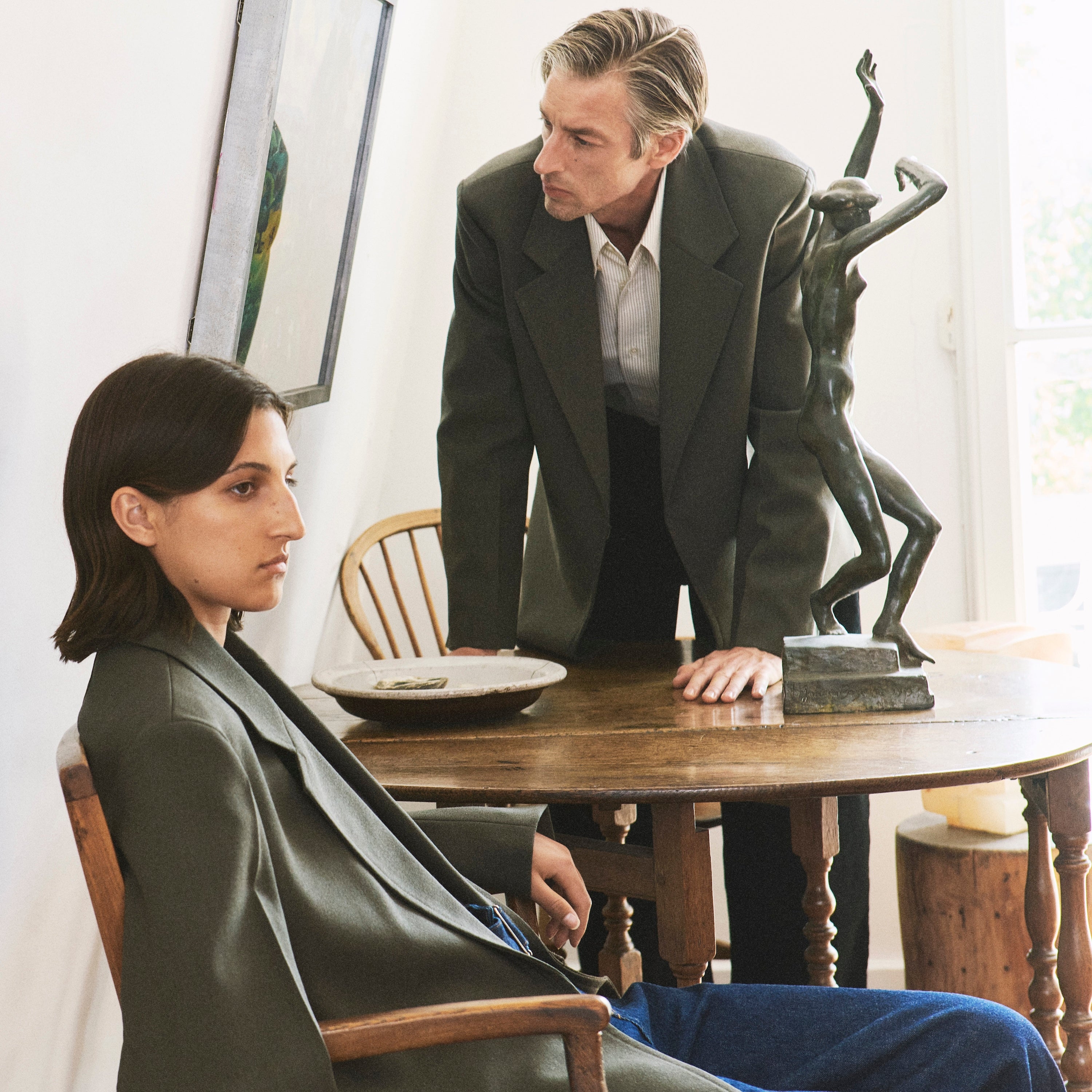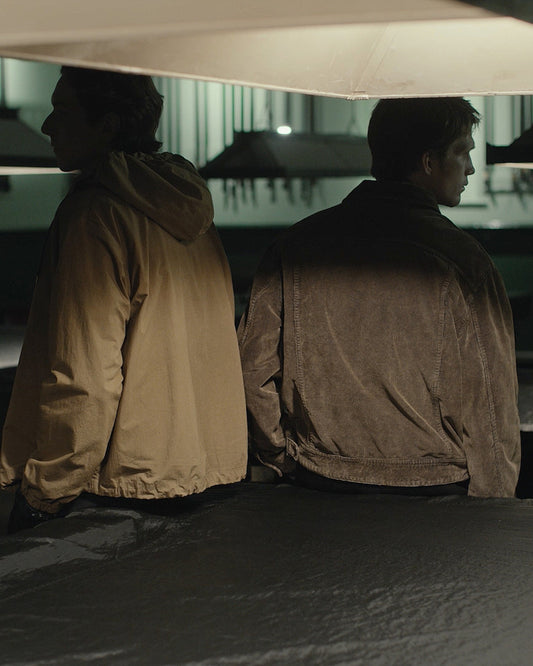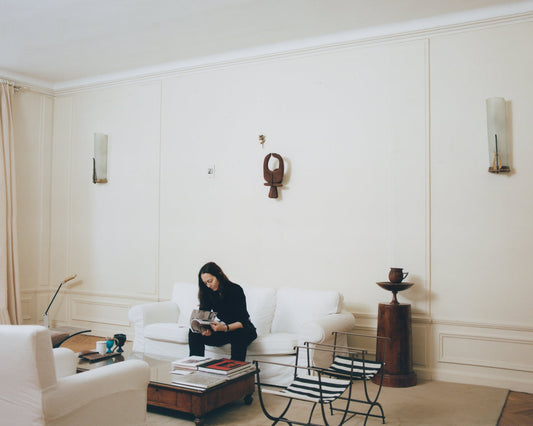“I think women should look real,” says Nick Wakeman, Creative Director and Founder of Studio Nicholson, from her East London HQ on a sunny afternoon.
She is discussing a recent photoshoot for the brand captured by Bibi Borthwick and featuring model Audrey Marnay wearing clothing she has specifically plucked from across the collections, including new prototype designs that will be coming to the collection soon, alongside menswear pieces, such as the best-selling Piston leather jacket. “These are really strong, powerful pieces, and I wanted to bring them together to think about how we wear clothes as women,” she says.
Working with Borthwick, who has photographed the likes of Sofia Coppola and Nicole Kidman, and Marnay, who walked in shows for Calvin Klein in the 1990s and has starred in campaigns for the likes of Chanel, was central to bringing Wakeman’s ideas of how women dress, to life. “Bibi understands women really well and she loves photographing them,” she said. “Audrey has lived a life, she has children, opinions, and perspective.”
Having just celebrated 15 years of Studio Nicholson, Wakeman herself is determinedly thinking about the future, and says she has a renewed sense of clarity within her own work and the way she wants to shape the women’s collections. “There is so much noise in womenswear at the moment,” she says. “There are so many perfect young women wearing very expensive clothing that doesn't look particularly authentic. It’s quite ironic given that most of the younger women that I come into contact with all have a crush on someone who is bit older.”
At Studio Nicholson, Wakeman is keen to encapsulate and celebrate women who, like her, have a point of view and who most likely choose clothing for themselves, for how it makes them feel, not just because someone else is wearing it or someone on Instagram is telling them they should wear it. “There are many women choosing clothing because they’re inspired by different elements from within their own lives. It might be a piece that perhaps they had in the past that made them feel great then, that feels relevant to them again now. Or they might be influenced by a great movie they just saw or a photography book. Mostly, it’s an attitude, a desire, a feeling, and it’s not about fashion,” she smiles.
The pieces in the shoot often revolve around the idea of a certain toughness against something softer, both literally and attitudinally. “If you’re going to buy a strong looking leather bomber then maybe you’re wearing it over a silk shirt, a skirt or a dress,” Wakeman offers. Ditto it could be a mannish overcoat with a silk pyjama-like set. “We’re definitely increasingly thinking about a certain kind of sensuality in the women’s collections,” she notes.
The physicality and feeling of the clothing is, and always has been, front and centre at Studio Nicholson. “What you’re wearing against your skin is very important. We always obsess over haptic, textural materials, and of course, that should always start with a softness against the body. The hard exterior of a leather jacket for example, should always be offset with a super tactile interior, whether that’s the jacket's lining or a languid layer between.”
Similarly, the idea of playing with menswear silhouettes and masculine ideas is rarely far from Wakeman’s vision of how women dress. From the unisex Alph varsity with a pleated chino to a men’s blazer styled with a woman’s silk blouse and men’s Riso jeans - the idea of women taking men’s codes and upending them to suit their own wants has been central to Wakeman’s philosophy for Studio Nicholson from the off. She would routinely chop up men’s suit blazers to re-imagine them for herself and eventually for the brand.
“There’s a very beautiful way through the masculine-feminine path,” she says. “Maybe you wear lipstick. Maybe you put on jewellery. If you’re wearing one masculine piece, do you need to add a more feminine one? Is it about hair? Is it just about your mood that morning and where that leads you?” Wakeman chose the jewellery for this particular shoot from the collections of Brazilian designer Fernando Jorge. “Fernando’s work is bold and features lots of diamonds, and I thought it just really worked with the clothes,” she said.
Did the three women discuss the outfits at length on the shoot? Wakeman laughs. “Of course we did. “Though weirdly it was less thinking about full looks in a way and more about different wardrobe categories, pieces that you know you always end up slightly coming back to. And what they specifically need to do. Or what shape they should be.” She pauses. “Or what they should feel like.”










